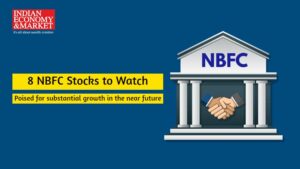Gautam Baid, CFA is Portfolio Manager, Global Equities
at Summit Global Investments, an SEC-registered investment advisor based out of Utah, USA. He also served at the Citigroup and Deutsche Bank.
Warren Buffett has often said that the best investment you can make is an investment in yourself. Similarly, Benjamin Franklin had said that an investment in knowledge pays the best interest. In today’s age of the ever-increasing role being played by artificial intelligence, one need to be a learning machine to remain forever relevant in the workforce as well as in one’s business. This has been best articulated by Charlie Munger, “Develop into a lifelong self-learner through voracious reading; cultivate curiosity and strive to become a little wiser every day.”
In stock market only basic addition, subtraction, multiplication, division and being able to think in terms of percentages is all the math skill you need. Peter Lynch has said that everyone has the brainpower to follow the stock market and “if you made it through fifth-grade math, you can do it.” Strive to always keep the entire analysis process as simple as possible. Munger has always advocated that as investors all we need to do is patiently wait for the no-brainers which keep presenting themselves from time to time and then act decisively. If you need to open an excel to evaluate a potential investment opportunity, watch out! In fact, it has been observed that students of liberal arts tend to do better in value investing.
The value investing
Warren Buffett wrote in his 2011 annual letter: “Investing is often described as the process of laying out money now in the expectation of receiving more money in the future. At Berkshire we take a more demanding approach, defining investing as the transfer to others of purchasing power now with the reasoned expectation of receiving more purchasing power – after taxes have been paid on nominal gains – in the future. More succinctly, investing is foregoing consumption now in order to have the ability to consume more at a later date.”
Regular monthly investments in high quality businesses at fair prices for long periods of time is possibly the most effective way to build up a sizeable retirement corpus and strong purchasing power during one’s retirement years. Because you are buying more stocks when they go down and less when they go up, this technique helps you to make rational buying with the potential for better risk-adjusted returns over time. In finance parlance, this is called “dollar cost averaging” and it works – as long as you’re not buying into bubble-level valuations like in 2000. For people with full-time jobs, building wealth has a very simple formula: “Spend less than you earn, and invest in a group of high quality businesses over long periods of time.”
First thing first
You should clearly define your time horizon at the very onset. Value investing works best when practiced over very long periods of time to reap the full benefits of compounding, the eighth wonder of the world. Having a long-term mindset is a huge structural advantage to have as an individual investor amidst an environment where fund managers are constantly being evaluated on their monthly or quarterly performance, which in turn leads to mispricing in many securities when they dump the short-term underperformers or chase the recent sharp outperformers.
It is necessary to distinguish between investment and speculation. A speculator looks at a stock as a piece of paper. An investor looks at a stock as part ownership of a business. Two important things which an investor should keep in mind to obtain “staying power”
- Understand the perils of leverage and why not to use it. To better imbibe this learning, read “When Genius Failed: The Rise and Fall of Long-Term Capital Management” by Roger Lowenstein.
- Avoid “the risk of ruin” by placing all your eggs in one basket and betting the entire house on one single investment. Diversify well by industry so that the individual stocks are not highly correlated to each other.
It is required to be an ardent student of crowd psychology, cognitive biases, market history and human behavior since objectivity, rationality and temperament are far more critical than raw intellect to succeed as an investor. Assess your existing skill sets in an honest manner to establish an initial circle of competence which you will be able to gradually expand over time as you get to learn about newer businesses and industries.
Investing just like life is a highly personal activity and is most effective when you are able to firmly stick to a disciplined strategy across market cycles, both bull and bear. You don’t have to have a very high IQ to become a good value investor. What you need is a good temperament and high levels of intellectual curiosity, patience and the willingness to work hard over a long period of time to compound knowledge and improve your rationality quotient.
The investment style
The fundamental tenets of investing do not change in a bull or a bear market, they remain firm and consistent forever, across market cycles (that is why they are called investing principles). Just focus on investing at reasonable valuations in low debt, cash flow generating businesses with high returns on equity and strong competitive advantages which can grow for long periods of time with minimal or no equity dilution.
The sustainable competitive advantages
Strong brands with “share of mind” which confer pricing power, network effects, high switching costs, patents, favorable access to a strategic raw material resource or proprietary technology, and government regulation which prevents easy entry – these can confer a strong competitive advantage which in turn enables high returns on invested capital for long periods of time (also known as the Competitive Advantage Period/CAP). Growing firms with high Return on Invested Capital (ROIC) and longer CAPs are more valuable in terms of net present value. One of the most highly underappreciated sources of a sustainable and difficult to replicate competitive advantage is “culture”, best epitomized by companies like Berkshire Hathaway, Amazon, Costco, Piramal Enterprises, HDFC Bank to name a few. To illustrate the critical importance of culture just consider this: Between 1957 to 1969, Warren Buffett did not mention the word “culture” even once in his annual letters. From 1970 to 2016, he has mentioned the word 30 times.
The essentials of due diligence
Pay extra emphasis on management quality (Capital Allocation), balance sheet quality (Debt, Receivables and Inventory) and quality of “reported” accounting earnings (free cash flows). You should partner only with ethical and prudent promoters in businesses that have very low debt (finance companies are the exception to this rule) along with favorable working capital cycle and solid free cash flows.
The company should be operating in a growing market, with a solid competitive advantage and the ability to grow using internal accruals without resorting to debt or diluting equity, is owner-operated who is the minority shareholder friendly and is prudent at capital allocation.
The gruesome businesses
Warren Buffett has defined “gruesome” businesses in his 2007 annual letter. Avoid any business that
- Consumes more cash than it generates, therefore requiring to constantly raise capital
- Operates in an industry with no entry barriers, leading to lower margins
- Requires to constantly invest just to remain competitive (The “Red Queen Effect”)
- Doesn’t have an ability to increase prices because of the commodity nature of its product
- Earns low rates of return which is lower than its cost of capital…and still wants to grow!!
- Operates in an unstable industry and is vulnerable to rapid technological changes
- Has egoistic managers who boast of invincibility about their existing high market share
- Engages in zero-sum games with its stakeholders
One should not chase “hot” stocks or get swayed by exciting “Stories”, “Narratives” or “Futuristic Concepts” since most of these kinds of businesses usually have unproven track records and/or lack of profitability & cash flows.
The endowment effect
Thinking in terms of “Opportunity Costs” is a very powerful mental model in investing. Many investors fall in love with their existing holdings (endowment effect) and do not conduct a rigorous opportunity cost analysis on a regular basis. Every single dollar spends the same and one should strive to achieve the biggest bang for their buck from every single dollar invested. Use a very high hurdle rate (discount rate/absolute return expectation) when assessing any potential investment opportunity. Personally, I do not invest in any security unless it can potentially deliver at least 26% CAGR over the next 3 years with “a very high degree of certainty/predictability” (As per the rule of 72, you double your capital every 3 years by compounding at 26%, 10 times in 10 years and 100 times in 20 years!). I have difficulties assessing any business’ prospects beyond 3 years, so I initially think in terms of 3 year periods.
The average NYSE stock fluctuates by 80% annually (i.e. 52-week high is 80% above the 52-week low for the average NYSE stock). This phenomenon is much more pronounced in many countries outside the US, meaning that the number of mispriced opportunities is far greater in highly volatile markets, particularly Emerging Markets like India. And all this happens despite the barrage of public information out there. Why do such anomalies arise so frequently? It is because the investing public is very emotional.
I do not need to get my valuation exactly right to the last decimal, all that I need to ensure is that I am buying at a large discount to what I believe the business will be worth 5-10 years from now, while initially making sure that it has robust growth prospects for the immediate upcoming 3 years. The only question an investor really needs to ask is whether the business is going to earn far more money than today over the next 10 years, and is the answer is yes, then one does not need to ask any more questions.
To a relatively unsophisticated non-professional investor, I would simply recommend regularly investing via the SIP route in highly rated mutual funds for the long term and avoid seeking high returns in an area they would not fully understand. The reason being that the most under-valued asset classes tend to be the ones that are neglected, out of favor, disliked, are undergoing temporary problems or are at near the bottom of the cycle in a cyclical industry – these situations require a higher level of expertise and dedicated time and effort.
Recently I attended the Berkshire Hathaway Annual Meeting in Omaha earlier this year. Apart from the great networking opportunities which such a mega event offers to value investors, it was a wonderful experience to witness my role models live on stage. Both Buffett and Munger answered questions on a range of topics for more than 5 hours. It was a humbling experience to see the breadth and depth of their knowledge and the level of mental alertness at their age. My first big takeaway was that without “deliberate practice” such a feat is not possible. After coming back from the Berkshire AGM, I read Talent is Overrated which is one of the seminal pieces of work on this topic. The second big takeaway for me was the importance of building up a large “mental database” of different businesses over time. Great opportunities keep arising periodically in industries outside one’s circle of competence and this is how an enlarging one’s opportunity set can be highly profitable for investors.
Some Important Books and authors
Some of my favorite books on competitive advantage are The Little Book That Builds Wealth by Pat Dorsey, Understanding Michael Porter by Joan Magretta and Different by Youngme Moon
To understand the quality of accounting
How to Read a Financial Report by John Tracy; Accounting for Value by Stephen Penman; Financial Shenanigans by Howard Schilit; Quality of Earnings by Thornton L. O’glove and The End of Accounting by Baruch Lev
To understand the value of free cash flow
Creating Shareholder Value by Alfred Rappaport; Valuation: Measuring and Managing the Value of Companies by McKinsey
To know how a business makes money
Business Model Generation by Alexander Osterwalder and Yves Pigneur
Compare expectations versus fundamentals
Expectations Investing by Alfred Rappaport and MichaelMauboussin
Think probabilistically (there are few sure things)The Drunkard’s Walk by Leonard Mlodinow; Innumeracy by John Allen Paulos
To update your views effectivelyStalking the Black Swan by Kenneth Posner; A few lessons from Sherlock Holmes by Peter Bevelin; Superforecasting by Philip Tetlock and Dan Gardner
Minimizing constraints to good thinking
Thinking Fast and Slow by Daniel Kahnemann; The Art of Thinking Clearly by Rolf Dobelli; Your Money and Your Brain by Jason Zweig; Why Smart People Make Big Money Mistakes by Gary Belsky and Thomas Gilovich
To know the difference between information and influence, read
The Crowd by Gustave Le Bon; The Art of Contrary Thinking by Humphrey Neill; Influence by Robert Cialdini (The chapter on “Social Proof”); Madness of Crowds by Charles Mackay and A Short History of Financial Euphoria by John Galbraith
To understand special situations investing, readYou Can Be A Stock Market Genius by Joel Greenblatt; Margin of Safety by Seth Klarman, and
Security Analysis 3rd Edition published in 1951 by Benjamin Graham & David Dodd which has a separate section dedicated to special situation investingThe Warren Buffett Portfolio by Robert Hagstrom
Fortune’s Formula by William Poundstone
Robert Hagstrom’s Investing: The Last Liberal Art
The Intelligent Investor by Benjamin Graham
The Essays of Warren Buffett by Laurence Cunningham
Common Stocks and Uncommon Profits by Phil Fisher
Where Are The Customers’ Yatchs by Fred Schwed
A Random Walk Down Wall Street by Burton Malkiel
One up on Wall Street by Peter Lynch
The Most Important Thing by Howard Marks
Reminiscences of a Stock Operator by Edwin Lefevre
Against The Gods by Peter Bernstein
More Than You Know by Michael Mauboussin
Influence by Robert Cialdini
A Study in Simplicity and Uncommon, Common Sense and Seeking Wisdom by Peter Bevelin
Your Money and Your Brain by Jason Zweig
Thinking Fast And Slow by Daniel Kahnemann
The Fifth Discipline by Peter Senge.





















